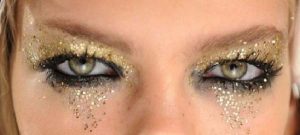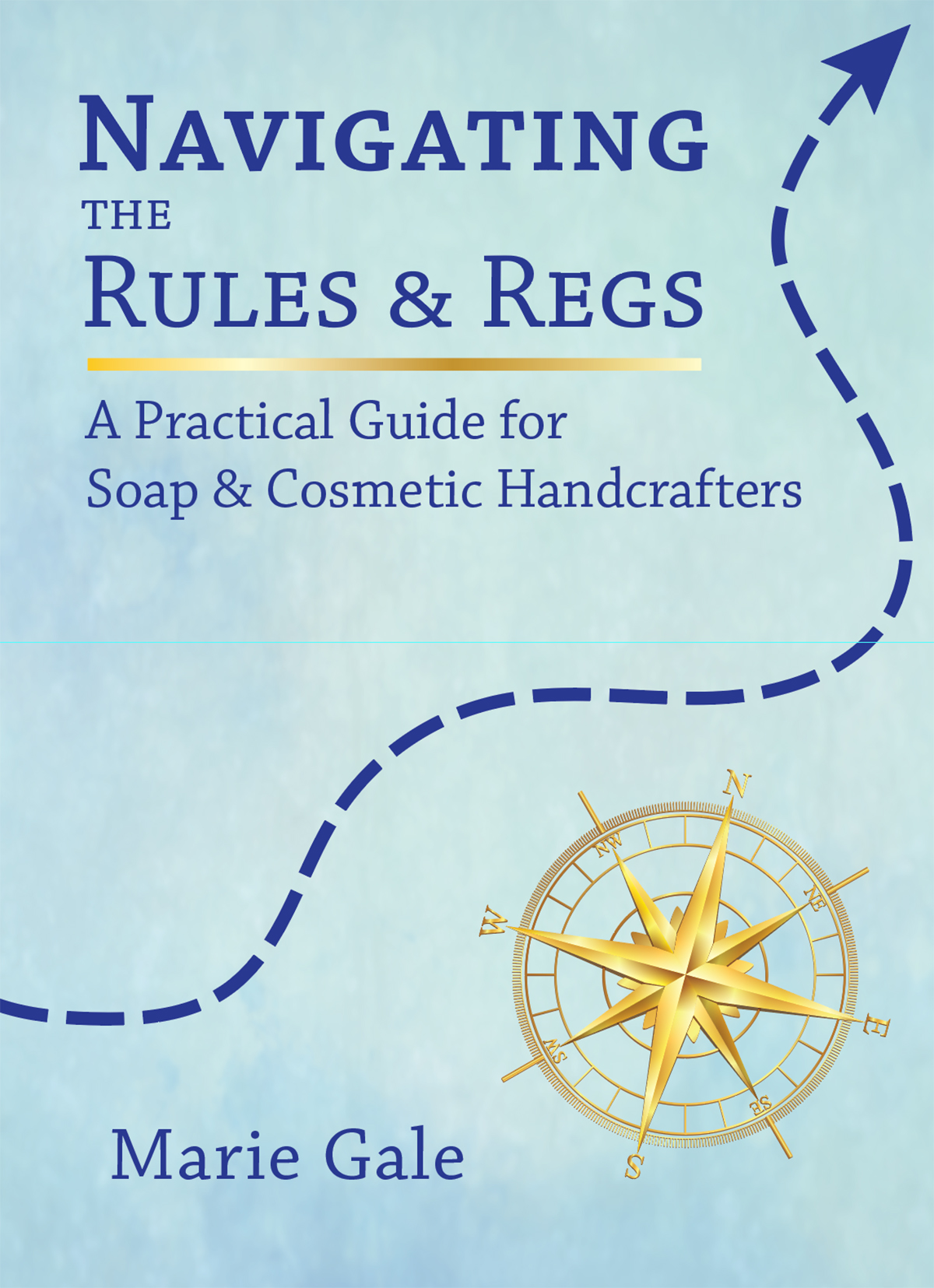Oooh, pretty! Shiny! Sparkles! Glitter! But can you put it in soap or cosmetics?
The FDA regulates color additives that may be used in cosmetics, and “glitter” is not on the list of approved color additives. In fact, the FDA says that glitter is not an approved color additive.
BUT, you can see glitter in all sorts of commercial cosmetic products… so what’s the deal?
I did some digging, and here’s what I found out.
Approved Color Additives
The FDA must approve any color additive to be used in foods, drugs, cosmetics, or medical devices. Not only do they approve whether the color additive may be used at all, they also specify how it may be used. For example, mica may be used anywhere, but henna is subject to limitations for external use and may not be used generally (including lips) or the eye area at all.
The FDA publishes a concise summary list, Color Additives Permitted for Use in Cosmetics.
Glitter is not on the list.
On a more general overview page on the FDA site, Color Additives and Cosmetics, the FDA explains about color additives. At the bottom, there is a section about special effects, which includes the following (I added the bold highlight):
Composite pigments: Color additives used in combination to achieve variable effects, such as those found in pearlescent products, are subject to the same regulations as all other color additives. Some color additives, when used in combination, may form new pigments, which may not be approved for the intended use. An example is a “holographic” glitter, consisting of aluminum, an approved color additive, bonded to an etched plastic film.
FDA website
And in Plain English …
When stuff is combined together to make a new pigment, it must have its own approval, even if the parts it was made of are approved as color additives on their own.
- Glitter is usually made by bonding a colorant (approved or not) to metal or plastic and then cutting it up into tiny little shiny pieces.
- Pearlescent colors are made by combining mica with colorants and/or other shiny stuff (like fish scales or mother-of-pearl).
And neither glitter nor pearlescent colors are actually approved for use in cosmetics.
But, But… They Are Used All the Time!

So true. A search at Amazon for “glitter” in the Beauty & Personal Care category showed 29,953 results! How can that be?
A Google search led me to 2012 blog post by Phyrra, a beauty, fashion, and lifestyle blogger, in which she tried to track down the FDA’s position on glitter after she read information from TKB Trading. Phyrra’s post has been quoted all over the web in discussions about glitter and pearlescent colors and seems to have the only from-the-horse’s-mouth data from the FDA.
She first asked the FDA for information about the safety of glitter in cosmetics, to which the FDA responded:
FDA considers glitter and mica-based composite pigments to be non-permitted color additives when used in FDA-regulated products, including cosmetics. However, we are exercising enforcement discretion for a period of time. … Once the enforcement discretion period is over, FDA will resume our enforcement of these non-permitted colors.
Phyrra’s Website
When she asked for clarification, she was told:
The regulatory status and safety of glitter, mica-based pearlescent pigments, and other composite pigments used in cosmetics are currently under discussion while we are exercising enforcement discretion for these color additives.
And finaly, after another email, the FDA further clarified:
Enforcement discretion means that we will allow products into the US that contain certain non-permitted color additives, like glitter, while we continue to review data submitted through the petition process and gathered by other means. Once we have completed our review and made a determination, the enforcement discretion period will end.
“Enforcement Discretion”?
A search (actually, a LOT of searches) of the FDA website and Federal Register to learn more about this “enforcement discretion” came up with zip. Nothing official on the website that says when this enforcement discretion started, who approved it, or when it will end.
Obviously the large, commercial makeup companies that produce glitter or pearlescent cosmetic products think the ingredients will ultimately be approved for use; otherwise they probably would not have invested the many thousands (or millions?) of dollars researching their products and getting them onto the market.
Or maybe they think they can make enough off the products to compensate for any losses if their products have to get pulled.
In any event, the market is saturated with sparkly, shiny, pretty cosmetics that use non-permitted color additives. Sheesh!
What’s The Justification?
It’s apparent that the FDA doesn’t think that glitter or pearlescent color additives are sufficiently unsafe to make it a problem if they are used in cosmetic products. That’s understandable if you look a little deeper.
“Cosmetic grade” glitter is usually made from polyurethane terephthalate (PET) plastic and aluminum, which are then tinted with various colors and shredded into tiny pieces. This type of cosmetic grade glitter (provided the colors used are already approved) is (I’m pretty sure) approved for use in cosmetics in the EU.1
The Cosmetic Ingredient Review Board issued their review of polyurethane terephthalate (PET), finding it safe for use in cosmetics (including glitter). PET is already approved by the FDA for most anything having to do with food contact and is used for medical devices including some cardiovascular prosthetic devices. And (If you can wrap your food in it or doctor can put it in your heart, it’s probably safe to put on your skin, don’t you think?)
So, in a way it seems that the FDA could be justifed in excercising “enforcement discretion” while they get their ducks in a row to create specifications and usage amounts for cosmetic glitter.
Craft Glitter – Is It a Problem?
Yes. YES! Definitely and emphatically, YES, CRAFT GLITTER IS A PROBLEM!
Unlike cosmetic glitter, which is made with soft plastic and cut into very small pieces with clean, often rounded, edges, craft glitter is usually made of metal and has sharp edges and pointy corners. Certainly NOT the sort of thing you want to get in your eye. Just see what happed to this poor woman, when one piece of craft glitter got in her eye when she was cleaning up. Hint: she has only one eye now.
Then, besides the fact that craft glitter is like teensy-tiny little knives, it is often colored with color additives that are not approved for use in cosmetics, making it a double no-no.
The Bottom Line
- Glitter and pearlescent micas are not approved for use in cosmetics in the US.
- As of July, 2012, the regulatory status of glitter and mica-based pearlescent pigments was “under discussion” and FDA was exercising “enforcement discretion” for them.
- There doesn’t seem to be any additional information publicly available from the FDA on the current status of glitter and pearlescent micas as color additives in cosmetics.
- “Cosmetic grade” glitter is approved for use in the EU.
- The Cosmetic Ingredient Review Board has found PET safe for use in cosmetics, including as a component of glitter.
- Cosmetic grade glitter and craft glitter are very different; craft glitter should never, ever, be used in cosmetic products.
Last, but not least, I have put in a Freedom of Information Act request to the FDA, asking for any information about the “discretionary enforcement” of glitter and pearlescent as non-permitted color additives (as well as some other areas that appear to fall under discretionary enforcement by the FDA). I’ll let you know what I find out!
- I’ve seen this information on several websites, but have not (as yet) been able to find the EU regulations that specifically say it is allowed. ↩︎



Leave a Reply